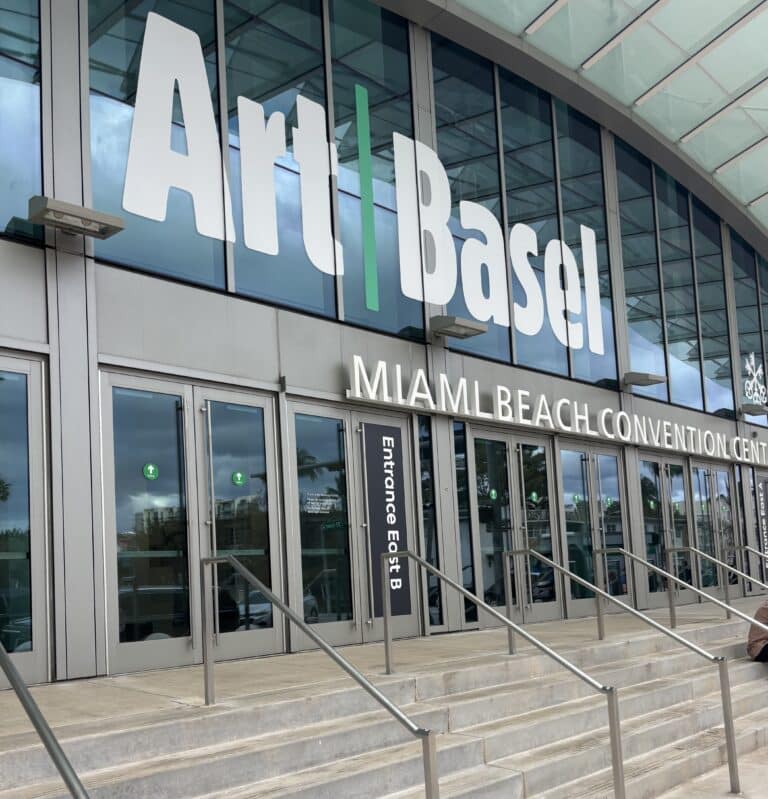Art valuation involves comparing data from multiple sources such as art auction houses, private and corporate collectors, curators, art dealers, and art advisors. But why should these factors matter to the art collector?
The Complex Ecosystem of the Art Market
The art market is a captivating world where creativity intertwines with commerce. At its core lies the intricate dance between pricing and valuation, shaping the perception of artistic worth and influencing the fate of masterpieces. While the subjectivity of art may seem to defy conventional economic principles, a closer examination reveals a complex ecosystem driven by factors such as artist reputation, provenance, aesthetics, and market demand. The realm of pricing and valuation in the art market is fascinating, a complex interplay of subjective and objective elements that shape the value of art.
The ecosystem of the art market is one of intermingled primary and secondary markets. Galleries and artist studios comprise what is called the “primary market”; as the term suggests, this is the first time a work of art has been sold. If the artwork is being sold by a collector, it enters what we call the “secondary market,” which has historically been dominated by individual dealers and art advisors, as well as auction houses, who specialize in re-selling works of art. Institutions like Sotheby’s or Christie’s, which wield a near-monopoly power in this domain, are trading platforms similar to NYSE and NASDAQ: buyers and sellers meet to exchange art for cash, and a public record is kept to track whether the object sold and for what price.
The contemporary art market has grown in recent years, with more collectors competing for a finite number of works by name-brand artists or young rising stars. As a result, it is difficult to be sure collectors are making sound investment decisions.
The rise in demand for fine art means galleries only sell only to their most loyal or high-profile clients, making it difficult for new buyers to get access to desirable works. A respected art advisor makes these critical introductions and uses their connections to facilitate access to artworks normally reserved for elite clientele (you can read more about this in our post, How Art Advising Works). This is where ArtRow steps in. ArtRow’s team compiles a vast trove of knowledge cultivated over years of looking at art, analyzing auction sales, and understanding the inner workings of the market.
ArtRow reimagines both the primary and secondary markets for fine art into a professionally managed marketplace. This means our pricing and valuation is consistent with both current art market dynamics and the work’s art historical merit. Read our mission statement here.
Art Market Dynamics: Subjectivity & Objectivity in Valuation
The art market is renowned for its subjectivity, as individual tastes and preferences play a significant role in determining the value of a piece. Beauty, after all, lies in the eyes of the beholder. However, objective elements also factor into pricing and valuation, providing a foundation upon which subjective judgments are made.
Art market professionals, including appraisers, auction houses, and dealers, employ various quantitative and qualitative techniques to objectively assess an artwork’s worth. Comparative analysis of similar artworks, examination of past auction records, and expert opinions all contribute to determining potential value. In recent years, these professionals have begun to utilize advanced data analytics and machine learning algorithms to analyze market trends and predict pricing patterns.
Considering that vast sums of money are traded on the international art market each year (Art market reports from 2023 value the fine art market at around $67.8 billion USD), the subjective value of art must be balanced by objective factors.
The Objective Factors that go into Valuation: Artist’s Biography & The Work’s Provenance
The art market is a constantly evolving landscape where factors such as trends, tastes, and societal influences intertwine. Price and valuation in this realm are driven by a range of interconnected factors. One of the most significant is the artist’s reputation, which encompasses their artistic achievements, critical acclaim, and market presence. Established artists with proven track records often command higher prices due to their legacy and desirability among collectors.
Provenance, or the history of ownership and exhibition, is another crucial element affecting the value of art. Pieces with illustrious provenance, such as those once owned by famous collectors or exhibited in prestigious museums, carry an aura of importance that can elevate their value. Additionally, the aesthetic quality and rarity of an artwork, as well as its historical and cultural significance, contribute to its valuation.
Derived from the French provenir (to come from), provenance refers to the chain of ownership, and in this sense, can be regarded as the original blockchain. For prospective buyers of a work, questionable provenance is the equivalent of questionable ownership in any other trade. One need only look as far as the looted Nazi art to understand why who owned the work prior to its sale is nearly as important as who made the work in the first place.
Provenance affects value in various ways. It provides the buyer with basic peace of mind that the seller is the legal owner of the work. If you’re collecting art from a celebrity provenance, it becomes even more important to secure any and all documentation that supports the work’s provenance.
Market Supply and Demand
Supply and demand dynamics play a crucial role in the art market. When demand for a particular artist’s work exceeds supply, prices tend to soar. Conversely, if supply exceeds demand, prices may stagnate or decline. Emerging artists can experience fluctuations in value as their reputation grows, while established artists with limited output may see sustained demand and price appreciation.
External factors, such as global economic conditions, cultural shifts, and geopolitical events, can also influence the art market. Economic downturns can lead to reduced art buying and decreased prices, while periods of economic growth often spur increased interest and investment in art.
Informed Buyers make More Secure Markets
If there is confidence that a work of art will increase in value—a Picasso, for instance—buyers are more likely to acquire the work. However, if we are uncertain about the art’s future valuation as an asset, the buyer is less likely to make the purchase. This decision involves both subjective and objective factors, but paying attention to the objective aspects of pricing and valuation, such as the artist’s biography and the individual work’s documented provenance, helps buyers successfully navigate the, at times, choppy waters of the art markets.
The art market is a fascinating blend of subjective appreciation and objective assessment, where the value of a piece is shaped by a multitude of factors. Artist reputation, provenance, aesthetics, rarity, and market demand all intertwine to determine pricing and valuation. While subjectivity remains inherent in the art world, professionals employ objective methods to inform their judgments. Ultimately, the art market is a dynamic ecosystem shaped by ever-changing tastes, trends, and external forces. By understanding the interplay of all the elements, collectors, investors, and enthusiasts can navigate this intricate world and uncover the true value of art.
New to the art market? Start here: “5 Tips for Buying Art”
Further Reading:
- Heilburn, James and Charles M Gray. “Art Markets,” The Economics of Art and Culture, 2nd edition: Cambridge University Press, 2006. 165-186
- Hulst, Titia. A History of the Western Art Market: A Sourcebook of Writings on Artists, Dealers, and Markets. University of California Press: 2017.
- Sussman, Anna Louie. “The New Collector’s Guide to Understanding Art Pricing,” Artsy. April 3, 2017.
- “The Art Basel and UBS Global Art Market Report: 2023”
- “Nazi-Era Provenance Research,” The Metropolitan Museum of Art.



